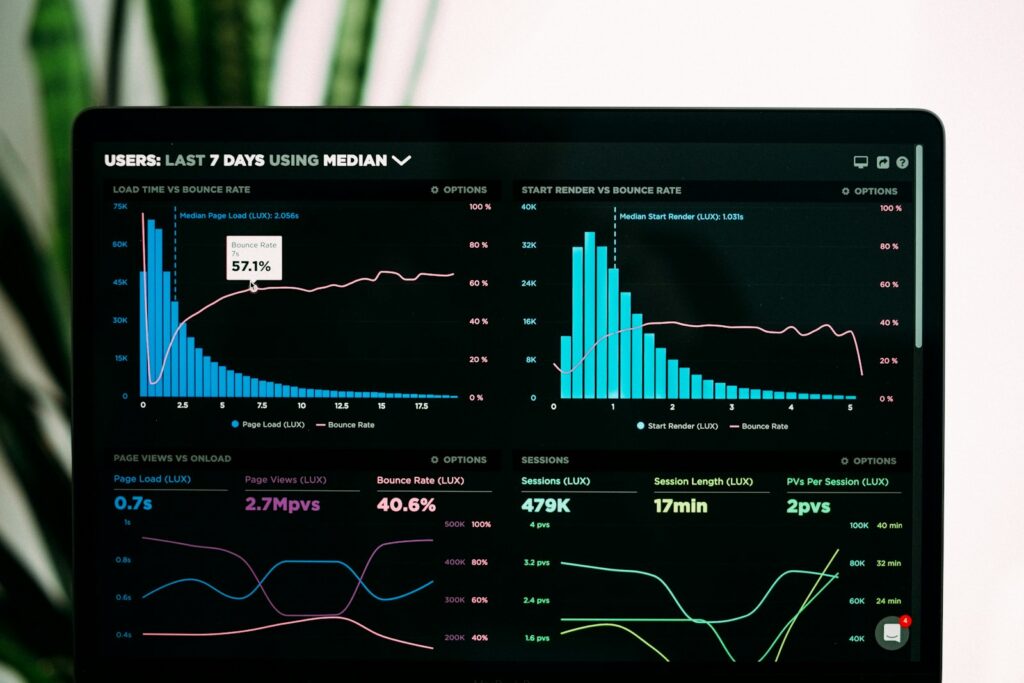Email marketing remains one of the most effective ways to engage customers, drive conversions, and build lasting relationships. However, the success of an email campaign often hinges on a critical factor: timing. In 2024, as consumers become increasingly inundated with digital communication, sending emails at the optimal time has never been more important. This blog post will explore the best days, times, and strategies for sending email campaigns in 2024, helping you maximize your open rates, click-through rates, and overall campaign success.
Understanding Your Audience
Before diving into specific times and days, it’s crucial to understand your target audience. Factors such as demographics, industry, time zones, and even the nature of your product or service can significantly impact when your audience is most likely to engage with your emails. For instance, an email campaign targeting working professionals might have a different optimal send time compared to one targeting stay-at-home parents or students.
General Best Practices for 2024
In 2024, several overarching trends are shaping email marketing strategies. These include increased mobile usage, a focus on personalization, and the growing importance of respecting subscribers’ time and preferences. With these trends in mind, let’s explore the best times to send email campaigns.
Best Days to Send Emails
1. Tuesday and Thursday: The Golden Days
Tuesday and Thursday have consistently been found to be the best days to send emails, and this trend continues into 2024. These days strike a balance between being early enough in the week to catch subscribers when they are still focused and late enough that they are not overwhelmed by Monday’s inbox influx.
Optimal Times:
- Morning (8:00 AM – 10:00 AM in the recipient’s time zone): Mornings, especially between 8:00 AM and 10:00 AM, are prime time for email opens. Subscribers often check their emails as part of their morning routine, making it an ideal time to send.
- Early Afternoon (1:00 PM – 3:00 PM in the recipient’s time zone): If you’re looking to send a second email or a follow-up, early afternoon is another sweet spot. After lunch, many people take a break and check their emails before diving back into work.
2. Wednesday: The Midweek Opportunity
Wednesday is also a strong contender for email campaigns. It’s midweek, so most people are in full work mode, making them more likely to engage with relevant content.
Optimal Times:
- Mid-Morning (10:00 AM – 11:00 AM in the recipient’s time zone): Mid-morning on Wednesday is often a time when people are settled into their workday and ready to engage with new information.
- Late Afternoon (4:00 PM – 5:00 PM in the recipient’s time zone): If you’re targeting professionals, late afternoon can be effective as people wind down their workday and check their emails once more before logging off.
3. Monday: The Early Bird Catches the Worm (But With Caution)
While Monday morning is notorious for a cluttered inbox, it can still be a good time to send emails if your message is time-sensitive or you want to be among the first to reach your audience. However, this strategy comes with a risk, as many people may quickly delete or overlook non-urgent emails on Monday.
Optimal Times:
- Early Morning (6:00 AM – 8:00 AM in the recipient’s time zone): Sending emails early on Monday morning can help you reach your audience before they get too bogged down with other tasks.
- Late Morning (11:00 AM – 12:00 PM in the recipient’s time zone): If you’re hesitant about sending too early, late morning on Monday can be a safe alternative, catching people who are more settled into their day.
Worst Days to Send Emails
1. Friday: The Disengagement Day
While Friday might seem like a good day to catch people before the weekend, it often results in lower engagement rates. Many people are focused on finishing their workweek and may not have the time or inclination to engage with marketing emails.
Exceptions: If you’re running a weekend sale or event, sending an email on Friday morning could still be effective, but it’s generally advisable to avoid Fridays for most campaigns.
2. Weekends: The Low-Engagement Zone
Saturdays and Sundays are generally the worst days to send email campaigns, especially for B2B audiences. Most people are focused on personal activities and are less likely to engage with work-related emails.
Exceptions: For B2C campaigns, if your product or service is directly related to weekend activities (e.g., leisure, entertainment, or dining), sending an email on Saturday morning might work, but it’s generally a risky strategy.
Time Zones Matter
In a global economy, it’s essential to consider time zones when scheduling email campaigns. Tools like email marketing platforms often allow you to schedule emails according to the recipient’s time zone, ensuring that your message hits their inbox at the optimal time, no matter where they are.
Key Considerations:
- Segment your audience by time zone to ensure that everyone receives your email at the right time.
- Use tools like Litmus or MailChimp to optimize send times based on your audience’s location and previous engagement data.
Advanced Strategies for 2024
1. A/B Testing: Fine-Tuning Your Send Times
In 2024, A/B testing remains one of the most effective ways to determine the best send times for your specific audience. By testing different days and times, you can gather data on what works best for your campaigns.
2. Personalized Send Times: Using AI to Optimize Engagement
As AI and machine learning continue to evolve, many email marketing platforms now offer personalized send times based on individual subscriber behavior. This technology can analyze when each subscriber is most likely to open and engage with emails, allowing you to send campaigns at the optimal time for each person.
3. Resend to Non-Openers
If your initial send didn’t get the engagement you hoped for, consider resending the email to non-openers at a different time or day. This strategy can help you capture additional opens and clicks without annoying your subscribers with duplicate content.
Conclusion
Timing is everything in email marketing, and in 2024, understanding the best days and times to send your email campaigns can make a significant difference in your results. While Tuesday and Thursday mornings continue to reign supreme, it’s essential to consider your audience’s unique behaviors, time zones, and preferences. By leveraging tools like A/B testing, personalized send times, and resending strategies, you can ensure that your emails reach your subscribers at the perfect moment, driving higher engagement and better overall campaign performance.
References:
- MailChimp. (2023). The Best Time to Send Email: A Data-Driven Guide
- HubSpot. (2024). What Is the Best Time to Send an Email in 2024?
- Campaign Monitor. (2023). Best Time to Send an Email: The Ultimate Guide
- Litmus. (2024). The Impact of Timing on Email Marketing Success
By adhering to these best practices and continuously refining your approach, you can ensure that your email campaigns achieve the highest possible impact in 2024.
Here’s a table summarizing the best and worst times to send email campaigns in 2024:
| Day | Best Times (Recipient’s Time Zone) | Reasoning | Considerations |
|---|---|---|---|
| Monday | – Early Morning (6:00 AM – 8:00 AM) | Reaches audience before they start their workweek tasks. | Risk of emails getting buried in Monday’s inbox. |
| – Late Morning (11:00 AM – 12:00 PM) | Audience is settled into their day, providing another opportunity to engage. | Avoid sending during high-stress periods like early Monday. | |
| Tuesday | – Morning (8:00 AM – 10:00 AM) | High engagement; part of morning routine for many. | Consider segmenting audiences for more precise targeting. |
| – Early Afternoon (1:00 PM – 3:00 PM) | Post-lunch email check; another peak time for engagement. | Ideal for follow-up or secondary emails. | |
| Wednesday | – Mid-Morning (10:00 AM – 11:00 AM) | Midweek engagement; audience is fully into their work rhythm. | Consistent performance across various industries. |
| – Late Afternoon (4:00 PM – 5:00 PM) | End-of-day email check; good for reaching professionals. | Avoid sending too late when recipients may be logging off for the day. | |
| Thursday | – Morning (8:00 AM – 10:00 AM) | Similar to Tuesday; strong engagement as recipients are focused and productive. | Send engaging and valuable content to maintain interest. |
| – Early Afternoon (1:00 PM – 3:00 PM) | Good for secondary or promotional emails; captures post-lunch attention. | Consider time zones if targeting a global audience. | |
| Friday | – Morning (9:00 AM – 10:00 AM) | Can work if promoting weekend sales/events; otherwise, engagement drops as the weekend approaches. | Risk of low engagement if emails are not time-sensitive. |
| – Late Morning (11:00 AM – 12:00 PM) | Last chance before the weekend; useful for certain B2C campaigns. | Avoid sending emails after noon to prevent them from being overlooked. | |
| Saturday | – Morning (10:00 AM – 12:00 PM) | Best for B2C campaigns targeting weekend activities. | Generally lower engagement overall; only use if relevant to weekend plans. |
| Sunday | – Evening (5:00 PM – 7:00 PM) | Some engagement as people prepare for the week ahead; limited to specific audiences. | High risk of low open rates; consider alternative days. |
This table can serve as a quick reference guide when planning your email marketing campaigns for 2024.
Related Articles:



